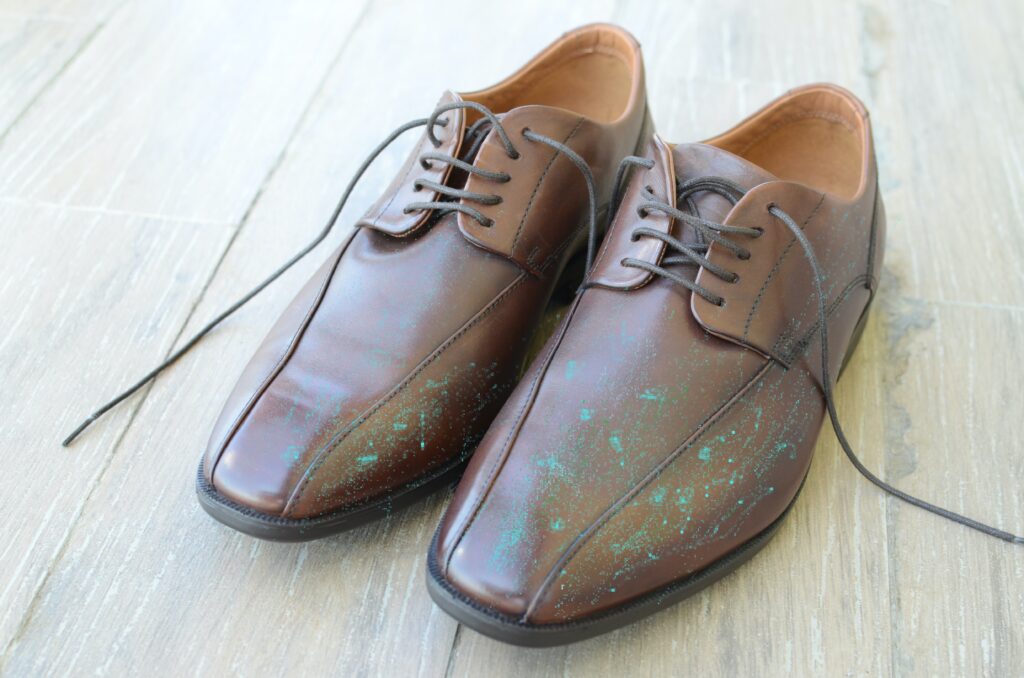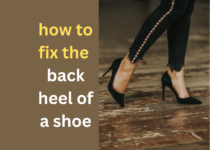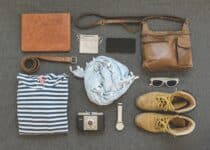10 Best Methods: How to clean mold off leather shoes
Table of Contents
Nowadays people are searching for how to clean mold off leather shoes. maybe you’re just attempting to keep your trainers in great condition by warding off mildew. Our shoes can lose their luster and charm if mildew grows on the fabric or leather. However, this doesn’t have to be the case, as there are straightforward measures one may take to both eradicate current Mildew and prevent its return. In this article, I will explain how to remove mildew from shoes and prevent it from returning. Read on for a tried-and-true method that will breathe new life (and pride) into your shoe collection.

People are searching for how to clean mold off leather shoes to prevent their shoes from mold
Is mold on leather dangerous?
Mildew is a fungus that grows rapidly in dark, humid places like closets and attics. Because of the porous nature of leather, it often forms on footwear. Mildew spores can easily settle and thrive when moisture is trapped inside the fabric or leather of your shoes.
Shoes can mildew for a variety of different, less usual, reasons, such as being stored in a damp or hot environment. The combination of high temperatures and heavy humidity might spell disaster for our favourite footwear on days like these.
how to clean mold off leather shoes?
You’ll need the following to remove mildew from your shoes:
- Sponges or other gentle fabrics
- Hot water
- Vinegar (the finest kind is white vinegar)
- Soaps and dishwasher detergents with antimicrobial agents
- a plastic pail or bucket
- Scrubbing brush (not required)
- Newsprint or sanitary napkins/tissue
- (Optional) Window A/C Unit
Once you’ve gathered the tools you’ll need, you can start working on cleaning the mildew out of your shoes.
Here Are Ten Simple Methods how to clean mold off leather shoes.
Step 1: To begin, clean up any recent mildew stains.
Wiping your shoes gently to remove fresh stains is the first step in removing mildew. A sponge or soft cloth with warm water and a few drops of vinegar will work. A fabric or leather item that has been saturated with too much water may develop unsightly mildew stains over time.
Step 2: Wash and soak.
Then, using a tiny scrub brush or sponge, massage some soap or dishwashing liquid into the afflicted areas if mildew patches or streaks have already begun to develop in. Soak your shoes in a plastic tub or pail of warm vinegar-infused water. It can help remove mildew stains and eliminate any lingering spores.
Step 3: Third, clean it and dry it.
After scrubbing your shoes to remove mildew, give them a good rinsing with clean water and allow them dry fully. To avoid getting the inside of your shoes wet, use paper towels or newspapers for this step. You should wait until they are completely dry to put them back on.
Step 4: If necessary, check and do it again.
Finally, make it a habit to inspect your footwear every few days for re-emerging surface mould. If you see any new spots or streaks appearing, just go back over steps 2 and 3 again. Spending some time and energy on this project will pay off in the form of shoes that appear brand new and the knowledge to avoid future mildew problems.
Step 5. Take care of your footwear.
Taking some easy precautions against the future development of mildew is essential if you care about your shoes’ appearance. Before everything else, make sure they’re not being exposed to direct sunshine or excessive heat from radiators or space heaters. Putting baking soda in an airtight container and storing it in your shoe cupboard can also help with odors and wetness.
Step 6: When necessary, run a dehumidifier.
A dehumidifier or fan may be needed to protect your shoes, depending on room humidity. This will help prevent mildew growth in your shoes caused by excess moisture. Simpler, plug-in variants can be found for a low price at most hardware and home improvement stores.
Step 7: If mildew is a problem, use a spray or solution designed to get rid of it.
A commercial anti-mildew spray or solution can be useful for removing stubborn mildew stains off shoes. Try it out in a small, hidden spot before covering the whole thing. Most fabric types may be safely treated with these sprays, making them a good alternative for removing mildew from shoes quickly.
Step 8: If your footwear wears out, get a new pair.
While following steps 1–7 will help you eliminate mildew from shoes that have already formed, it may be more practical to buy a new pair of shoes altogether. Especially if mould and mildew have grown so thick on the cloth or leather that it has begun to rot or degrade. Buying new shoes is better than recovering old ones.
Step 9: Regular shoe cleaning is a must.
How to stop them from coming back in the first place should also be considered. Purchasing maintenance supplies specifically made for your preferred shoe brands is a smart first step in this direction. If you want to use them on your shoes, you need make sure they are appropriate for the material.
Step 10. Tenth, keep moisture and humidity levels down to a minimum.
Finally, keeping your home dry and cold can prevent mildew from forming. Close windows or use a dehumidifier depending on humidity.
Doing so can help preserve the quality of your shoes and prevent mildew and mould from growing in them over time. Following these guidelines will help your favorite shoes last for years while still looking like new. Why hold off? To start enjoying your shoes as they were designed to be enjoyed, without worrying about mildew, start implementing these steps right now.
5 Additional Tips and Tricks.
- Protect your leather or suede footwear from moisture and mildew by spraying it with a leather protectant.
- Second, leave your shoes in a well-ventilated area after each use if at all possible.
- When not in use, plastic shoe boxes or airtight containers are great places to keep shoes that are prone to mildew growth.
- You can make even the dirtiest shoes appear like new with the help of a gentle shoe cleaning or stain-removing solution.
- If you want to keep your shoes mildew-free, you should avoid wearing them in moist or damp environments as much as possible.
No matter how often you wear them, your shoes will always look their best if you follow these guidelines.
how to clean mould off leather shoes Naturally or how to clean mold off leather shoes
Mildew can be killed and prevented with the use of several natural therapies. Hydrogen peroxide, diluted vinegar, tea tree oil, grapefruit seed extract, and grapefruit seed extract are all frequent options for treating acne. To further safeguard your footwear, try cleaning them down with a combination of water and baking soda, or treating them with a solution containing acetic acid.
You can slow the spread of mildew over time by keeping your shoes dry and airy and by putting damp things away right away. Finally, there are commercial remedies for shoe mildew. In sum, there are a wide variety of both natural and commercial solutions for eliminating mildew and avoiding its return. You can find the best answer with some investigation and trial and error.
Conclusion
In order to get rid of how to clean mold off leather shoes. To find the best method, try numerous. Always be sure to air out your shoes after wearing them to prevent the growth of mildew. The greatest method for removing mildew from shoes has been revealed to you.
Preventing issues is crucial. If mildew does develop despite your best efforts to prevent it, you can have your shoes looking as good as new by following these procedures. The article on removing mildew from shoes should prove useful. Wishing you success in all your future shoe-cleaning endeavors, and lots of fun times at the mall!



